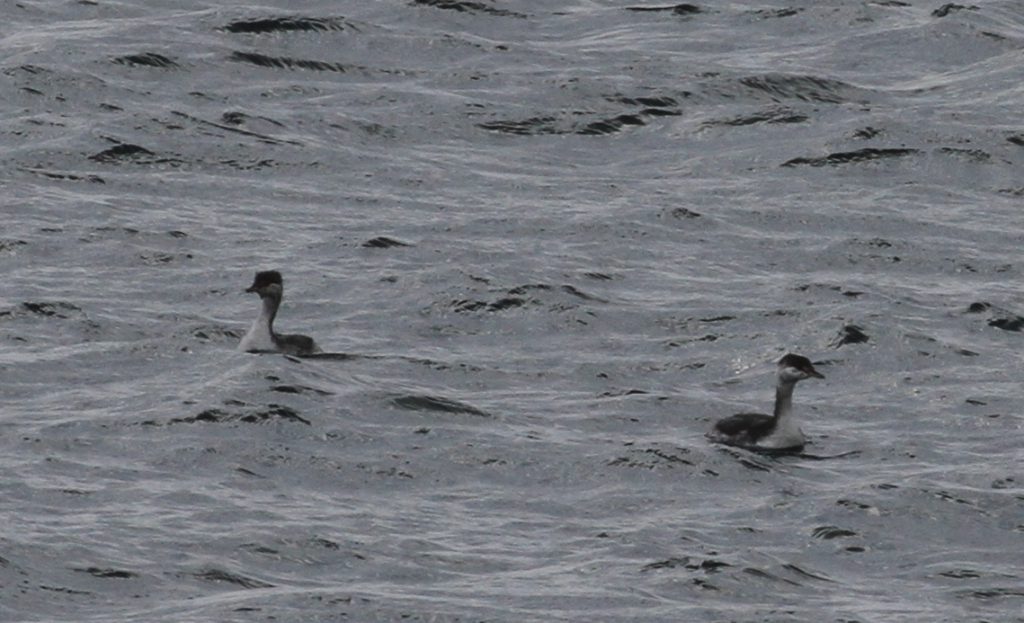Temp in the 50s, partly sunny, SW wind 15-30 mph
Our final day started with partly sunny skies, but very strong winds, making finding seabirds difficult. Alas, our feeding stations produced nothing new this year. We didn’t add anything new today.
However, at the Kuluk Bay overlook on Bayshore Highway, we watched a Gyrfalcon attempting to catch a Black-legged Kittiwake out over the bay. The Gyr would fly up, dive down, miss, and repeat. This lasted at least 5 minutes, probably more. The Kittiwake was too nimble and the Gyr finally gave up and continued on its way.
At the Seawall, a couple of Horned Grebes came close enough to photograph.
Our trip home was fine until we got to Chicago and our flight to Philadelphia was delayed 6 hours (!) due to the bad weather in Philly. We went from “Temp in the 50s, partly sunny, SW wind 15-30 mph” on Adak to Temp in the 50s, partly sunny, SW wind 15-30 mph at home!
We finish the trip with 55 species — one shy of our September average.
We had one lifer and several semi-lifers.
The lifer, of course, was the Taiga Flycatcher. This was the first record for Adak, the first record for the Central Aleutians, and the first Fall record for all of the Aleutians!
The next-best bird was the pair of Gray-tailed Tarttlers. These were only our second record for this species since we have been coming to Adak.
The Blackpoll Warbler, while not a lifer (or even close!) was still significant, as it was the first record for all of the Aleutians.
There were numerous bird behavior interactions to entertain us as well.
In 2005, ’06, ’08, ’09, and ’10, we visited Adak only once each year. All of the rest, we visited both spring and fall. For those years, the combined year’s list has averaged 83. Our best year was 2007, which had a terrific spring (Spot-billed Duck, Smew, Terek Sandpiper, among others) and fall (Marsh Sandpiper, Gray-tailed Tattler, Lesser Sand-plover, Eye-browed Thrush, Siberian Rubythroat, etc.) and produced 91 species.
This year, we had 89. mostly due to a terrific Spring trip. Amazingly, we missed Emperor Goose and Sanderling on both trips this year — a first!
We are already planning for next year.

